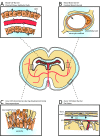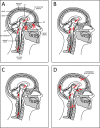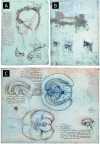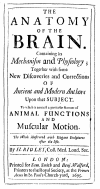Fluids and barriers of the CNS: a historical viewpoint
- PMID: 21349150
- PMCID: PMC3039834
- DOI: 10.1186/2045-8118-8-2
Fluids and barriers of the CNS: a historical viewpoint
Abstract
Tracing the exact origins of modern science can be a difficult but rewarding pursuit. It is possible for the astute reader to follow the background of any subject through the many important surviving texts from the classical and ancient world. While empirical investigations have been described by many since the time of Aristotle and scientific methods have been employed since the Middle Ages, the beginnings of modern science are generally accepted to have originated during the 'scientific revolution' of the 16th and 17th centuries in Europe. The scientific method is so fundamental to modern science that some philosophers consider earlier investigations as 'pre-science'. Notwithstanding this, the insight that can be gained from the study of the beginnings of a subject can prove important in the understanding of work more recently completed. As this journal undergoes an expansion in focus and nomenclature from cerebrospinal fluid (CSF) into all barriers of the central nervous system (CNS), this review traces the history of both the blood-CSF and blood-brain barriers from as early as it was possible to find references, to the time when modern concepts were established at the beginning of the 20th century.
Figures






References
-
- Barcroft J, Barron D. Factors influencing the oxygen supply of the brain at birth. J Physiol USSR. 1938;24:43–55.
-
- Møllgård K, Balslev Y, Lauritzen B, Saunders NR. Cell junctions and membrane specializations in the ventricular zone (germinal matrix) of the developing sheep brain: a CSF-brain barrier. J Neurocytol. 1987;16:433–444. - PubMed
LinkOut - more resources
Full Text Sources
Other Literature Sources
Research Materials

